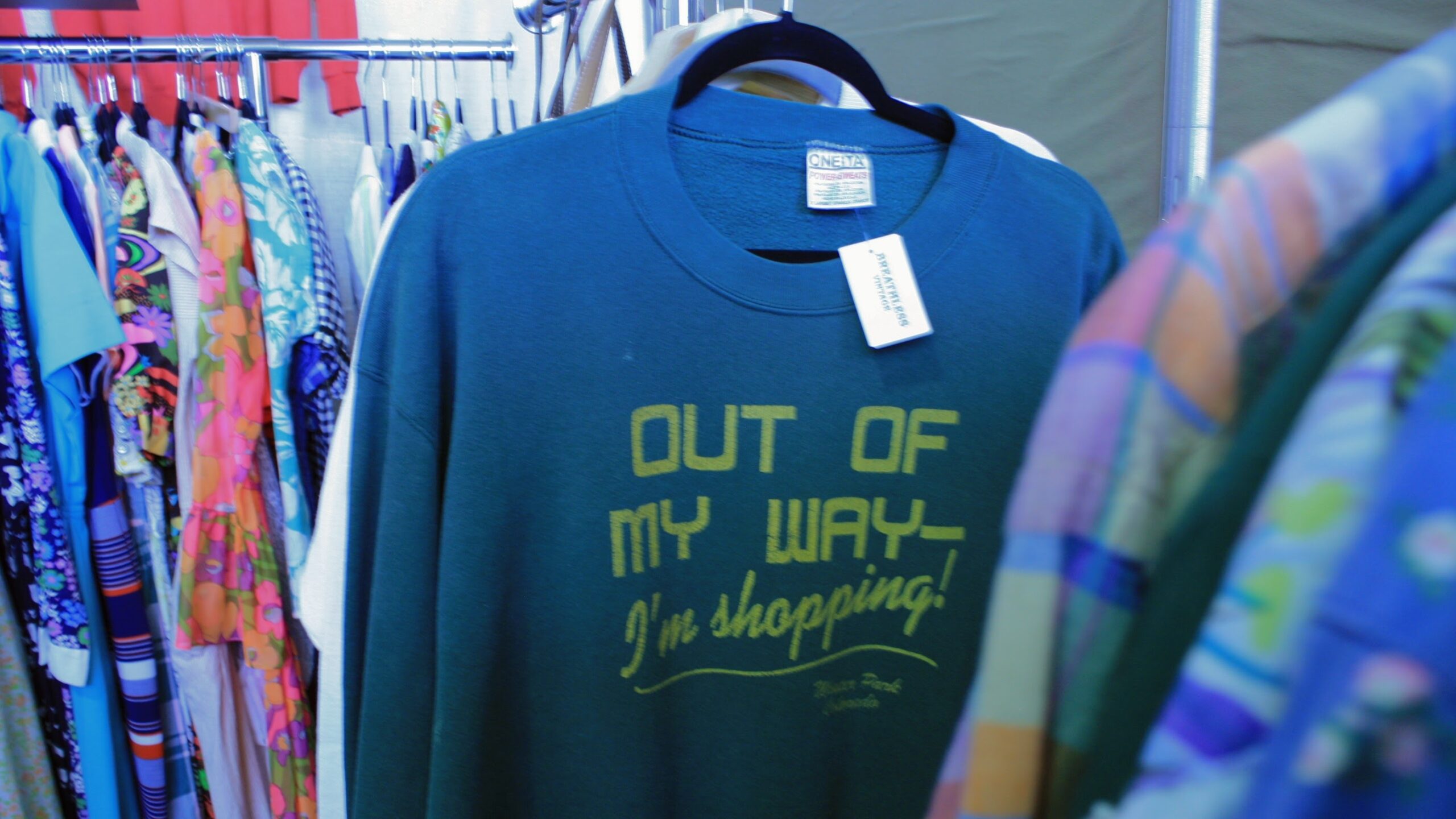Justice Colwell, owner and operator of Adawegamig, harbours a passion for vintage clothing. He launched his vintage shop and trading post in late 2018 as a passion project.
And his fascination has grown into a thriving business. He was among the 125 vendors at last weekend’s Toronto Vintage Clothing Show.
Colwell said he started his vintage shop and trading post as a passion project in late 2018.
He said he has been a collector his whole life, and his passion for curating vintage clothing came from interacting with history through each piece.
“From the image on the front of the T-shirt, to the tag on the collar, or the stitching on the sleeve, each item tells its own story,” he said.
The Toronto Vintage Clothing Show, Canada’s largest sale of vintage clothing, returned to the Queen Elizabeth Building at Exhibition Place for its 11th year on April 1 and 2.
This year’s show featured vintage clothing, home décor and artwork. Participating vendors collectively showcased a wide range of unique fashions ranging from the 1920s to ’90s.
Vintage J & J was a vendor specializing in vintage clothing and accessories, including 1920s lace petticoats and gowns, alongside antique sewing tools and fabrics.
Co-owner Julia Wright said the company doesn’t sell their vintage pieces from a storefront like many other vendors, but utilize vintage clothing conventions and shows such as this one instead.
Owner of Breathless Vintage Lori Marsden, who also participated in the show, said vintage does not mean looking for clothing from a specific decade or style.
Marsden said she preserves the vintage by basing her collection on quality and reworks or mending items as needed.
But she said while she has collected vintage products from textile warehouses for more than 10 years, sourcing has now become more difficult.
“We have to kind of take what we can find that’s vintage, because it’s so hard to find now,” Marsden said.
The show is a reflection of the global surge in popularity of second-hand fashion over the past decade.
According to Statista, an online platform specializing in market and consumer data, the resale fashion industry is projected to be valued at $105.9 billion by 2030, thus overtaking fast fashion.
Colwell said his love of fashion is not blind to the negative impact fast fashion has on the environment.
He said buying thrifted clothing supports the reuse of existing materials, rather than the wasteful mass-purchasing of newly manufactured items.
Humber College Fashion Professor Francesca D’Angelo said thrifting vintage fashion has become trendy because of a social and psychological shift, as well as the presence of social media.
“We have social media and the pressures of social media to constantly – and correct me if I’m wrong – but to constantly look good and keep up with that selfie and the look,” D’Angelo said.
She said younger generations, unlike previous ones, are not embarrassed to buy pre-owned clothing.
Having access to desired clothing has become more important than previous ownership, she said.
D’Angelo said thrifting may be young people’s new form of hunting in some ways, in the search to find items others could not.
“Maybe there’s something more – something deeper than we’re even thinking,” she said. “Like we’re going back to some bare instincts of ‘I need to hunt and forage those things,’ that are kind of taken away from us, because of the commodities of everyday living.”
Colwell also said his love for vintage has provided him with something deeper.
“Adawegamig provides an opportunity for us to continue learning about fashion and everything that it intersects with including sports, politics and pop culture,” he said.

